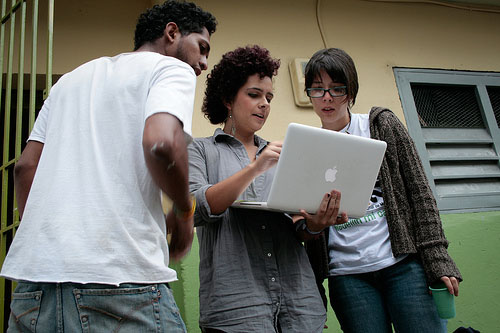Visit Audio Recordings for the audio version of this section.
LEARNING OBJECTIVES
- Describe what the client needs to know about the management style during different phases of a project.
- Identify advantages and disadvantages of including the client on project teams.
To appreciate the skill and effort expended by the project team in achieving the objectives of the project, the client needs to know more about what the team does.
Educate the Client from the Beginning
Often the client does not have project management experience and, therefore, does not understand project phases and the requirements of the different phases. A less-experienced client may become frustrated at the changes in the management approach required for the different phases of the project. For example, during the early phases, the project leadership is encouraging creative approaches to accomplishing the project goals. As the project proceeds and the project plan becomes more firm, the project leadership focuses on accomplishing the project goals. The types of meetings, the agenda of the meetings, and the general project atmosphere change as the project moves from the planning phase to the production mode of the execution phase of the project.

During the last phases on a project, project team members are often tired and beginning to anticipate the transition that will take place at the end of the project. The motivational approach that worked during the early phases of the project is less effective during the final phases, and the project manager applies different approaches to motivating the project team. These changes can be disconcerting on a person’s first project. By explaining what to expect and planning with the client a process to minimize the impact of these changes, the project manager prepares the client for these events and reduces the frustration.
Include the Client on Selected Project Teams
The client translates the needs of the organization through chartering the project and defining the project scope to the project manager and the project team. The client also has a supervision role. This supervision is often accomplished through regular project reviews and reports from the project team. Depending on the complexity level of the project, the reviews can vary significantly. On less complex projects, the review might be conducted in a one-hour meeting with a one-page summary document serving as the project progress report. On more complex projects, a full-day meeting might be necessary for the project progress to be fully understood, and the project report may be one hundred pages or more.
In addition to providing the formal overview of the project, most clients would like to actively participate in the success of the project. This is a delicate balance. The participation of the client can have undue influence on project decisions. The advantage of including the client in project activities is to gain the client’s personal investment in the project plan, to create a better understanding for the client of the problems the project encounters during the life of the project, and to gain the insights and contributions of the client in problem solving.
Involving the client in teams where the client’s special knowledge can add value to the team discussions and activities contributes both to the success of the team and the satisfaction of the client. During the development of a chemical-plant employee training in Tennessee, the project team struggled with a very tight project schedule. A team was established to explore ways to reduce the approval process for the drawings of the instructional design. It was taking two weeks for the design review, and even though this was within the normal time frame for design reviews, the project management team believed there were opportunities to reduce this time and shorten the length of the project.
The client’s engineering manager participated in the brainstorming sessions that explored ways to reduce the design review time. Several good ideas were developed and put into place. The client’s engineering manager took these ideas back to the client’s team and instituted many of the same ideas. There were two positive results: (1) a shortened schedule that saved two weeks by the end of the design, (2) a client that was emotionally engaged in the positive outcomes and contributed to the project success.
KEY TAKEAWAYS
- The project manager’s style changes with each phase of the project. The client might not have experience with project phases and needs to be guided through the different phases, the purposes of each phase, and the different management styles those entail.
- Client participation in project teams can have undue influence on decisions, but this is offset by the buy-in of the client and the insights the client can offer when special knowledge is needed or schedules need to be changed.
